In a ‘perfect comeback,’ some birds use antibird spikes to build their nests
Some Eurasian magpies may use the spikes as they were originally intended — to ward off other birds
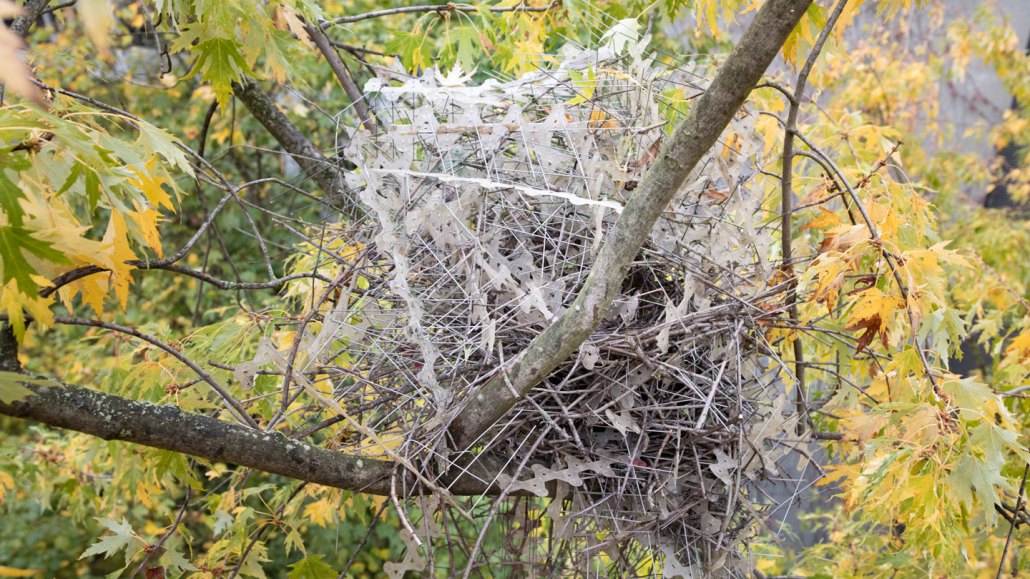
A Eurasian magpie nest made partly out of more than 1,500 antibird spikes sits in a sugar maple tree in Antwerp, Belgium.
Auke-Florian Hiemstra
- More than 2 years ago
Read another version of this article at Science News Explores
It’s the Mad Max dream of a bird’s nest: A menacing composite of metal, clay, twig and plastic.
Spotted in a sugar maple tree in Antwerp, Belgium, the gnarly architecture brims with at least 1,500 long, sharp antibird spikes pointing out from its center. “That is really like a bunker for birds,” says biologist Auke-Florian Hiemstra. “Like this fortress which cannot be taken.”
The nest is one of five found in Europe, each one decorated with antibird spikes, Hiemstra and his colleagues report July 11 in Deinsea. The pointy strips of bird-deterrent materials normally line eaves in cities around the world. Now, they line some birds’ homes.
The study started when a hospital patient in Antwerp looked out his window and saw the nest in question. He sent a picture to Hiemstra, who researches nests and plastic pollution at Naturalis Biodiversity Center in Leiden, Netherlands (SN: 4/12/21). After breeding season, Hiemstra and his team travelled to collect the nest and take it back to the lab for study. As he wrote up his report of the nest, he was tipped off to four more similar bird nests in cities in the Netherlands and Scotland.
The nests belonged to Eurasian magpies (Pica pica) and carrion crows (Corvus corone). The crows used the spikes as part of the structure of their nests (SN: 5/12/22). But Hiemstra believes the magpies employed them much as they were originally intended: to ward off other birds.
-
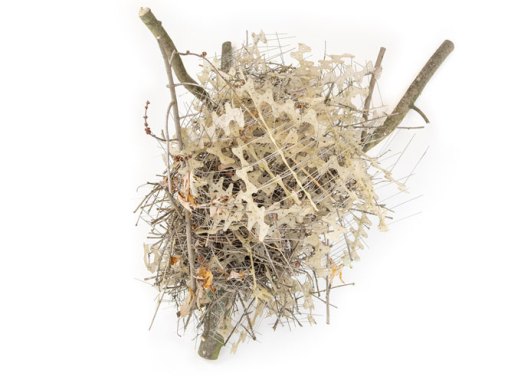
This is the nest that started the new study. Spotted outside a hospital in Antwerp, Belgium, this Eurasian magpie nest (pictured in the lab after removal) is adorned with roughly 50 meters of antibird strips that contain more than 1,500 spikes. The strips were originally meant to deter birds from landing on buildings. Auke-Florian Hiemstra -
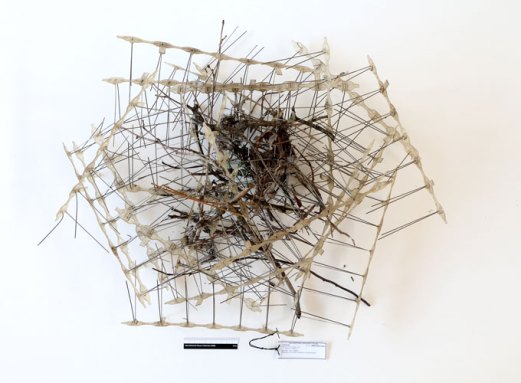
This carrion crow nest (pictured in the lab after removal) was found in a poplar tree in Rotterdam, Netherlands. The structure contains 24 identical antibird strips — likely pilfered from a nearby construction site — with a total of 336 spikes. It also contains another bird-deterrent: a piece of netting used to keep birds from gardens and balconies. Kees Moeliker -
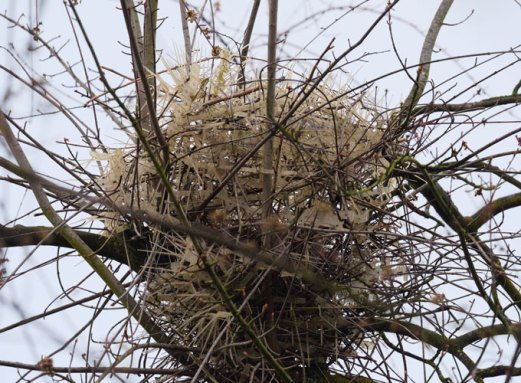
This Eurasian magpie nest constructed with antibird spikes was spotted in an ornamental plum tree in Enschede, Netherlands. The spikes in this nest are a mixture of materials: some have metal pins, others are entirely plastic. Wijnand Koekoek -
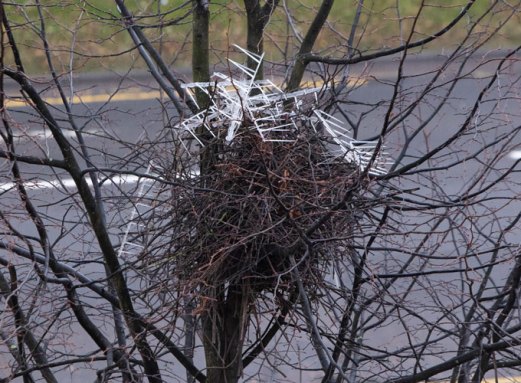
This Eurasian Magpie nest, with bird-deterrent material covering its top, was found in a residential area in the Partick neighborhood of Glasgow, Scotland. Max Crawford
Magpies are relatively small, so they create domed roofs over their nests to protect their eggs and hatchlings from avian predators. Often, the magpies adorn their roofs with thorny branches for extra protection. But in large cities, spiny vegetation is harder to come by, so the magpies innovate with whatever materials they have available, like nails, screws or knitting needles. Antibird spikes serve as the ultimate Anthropocene replacement, the researchers say (SN: 7/11/23).
The observations are “fascinating,” and the use of citizen science is laudable, says Zuzanna Jagiełło, an ecologist at the University of Warsaw who wasn’t involved in the study. However, she thinks that the paper lacks the experiments or in-field observations to claim that the spikes in the magpie nests are used as a bird deterrent. “It’s a starting point to explore [the phenomenon] more deeply,” she says.
Already, Hiemstra has received reports of other nests made with the spiky material, leading him to believe that the construction may be more common than previously thought. With enough nests, he might even be able to study if the spikes are improving the survival of the young magpies that call the nests home.
Still, amid his scientific excitement, Hiemstra can’t help but laugh. “I just love the irony of it all,” he says. “It’s just the perfect comeback of the birds.”





